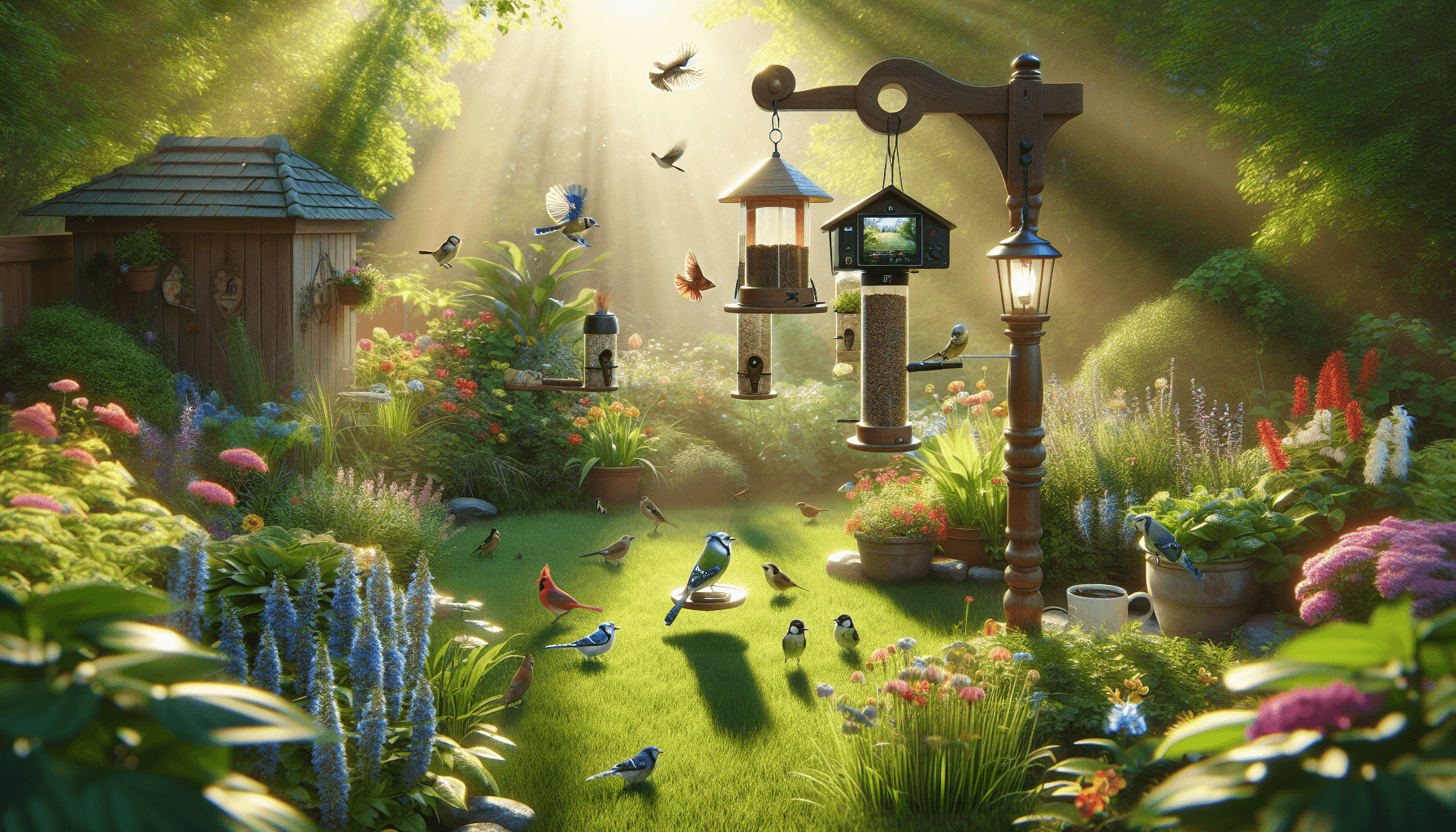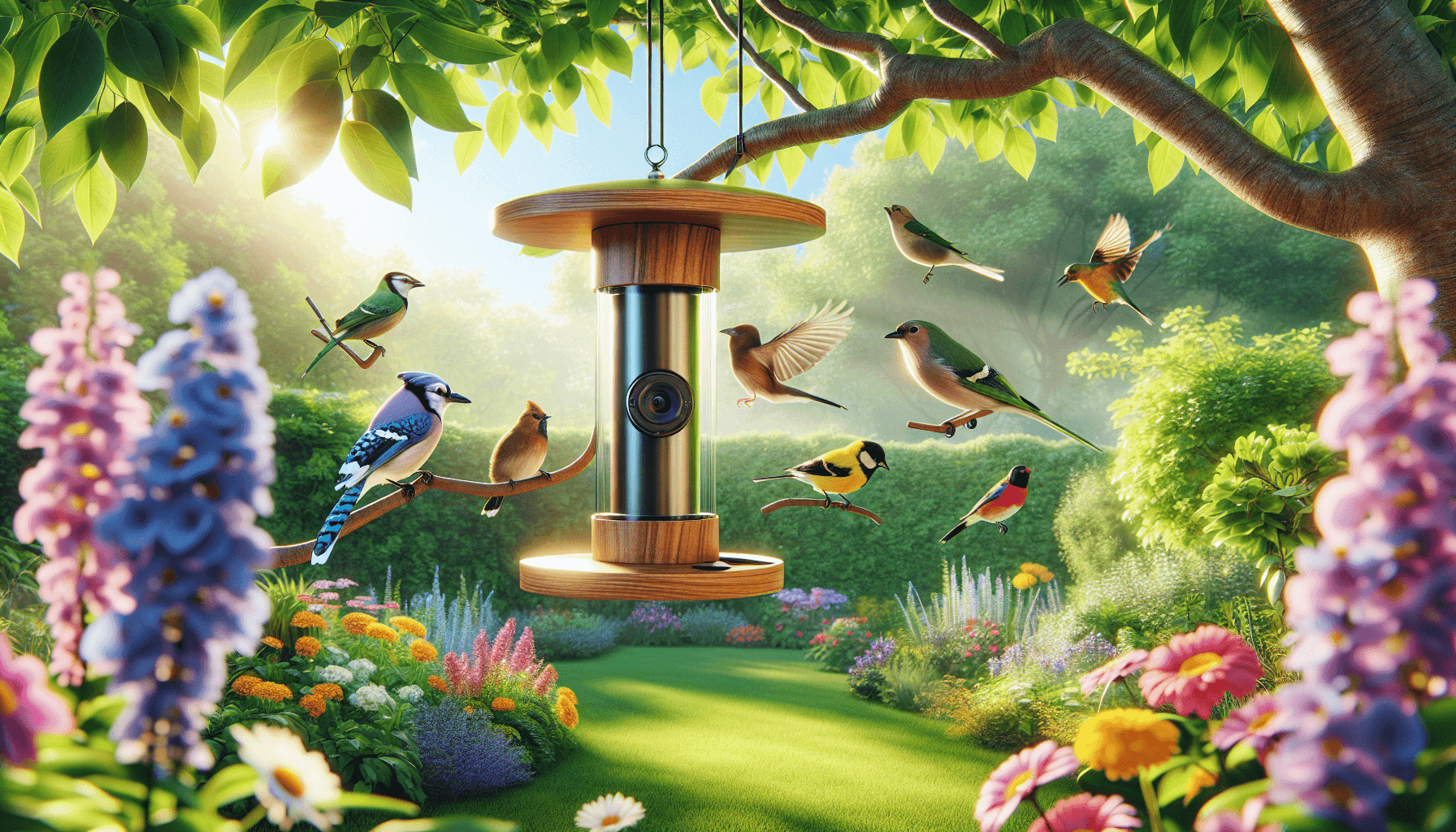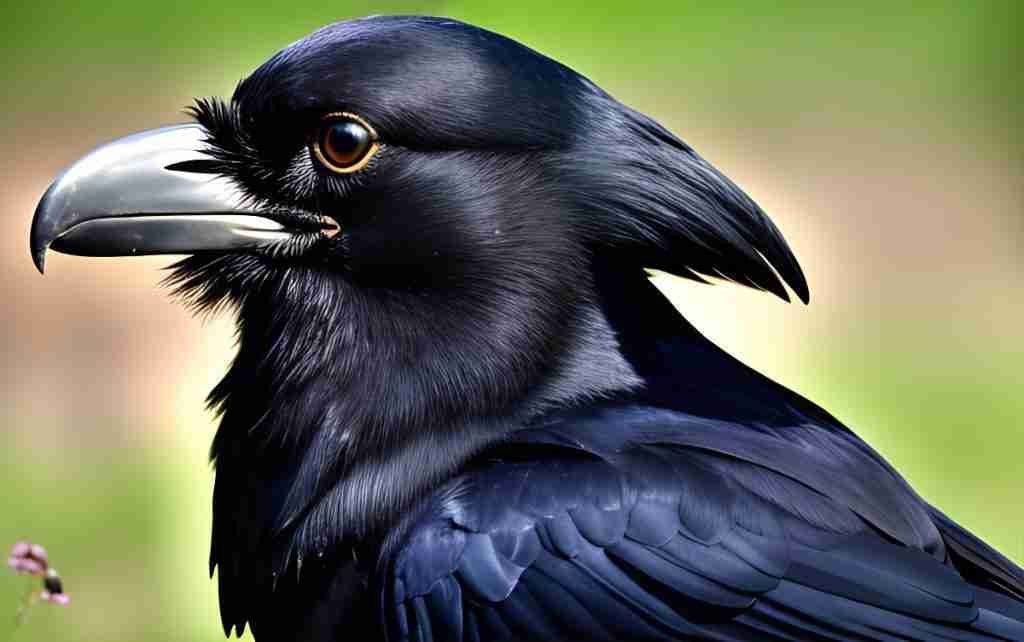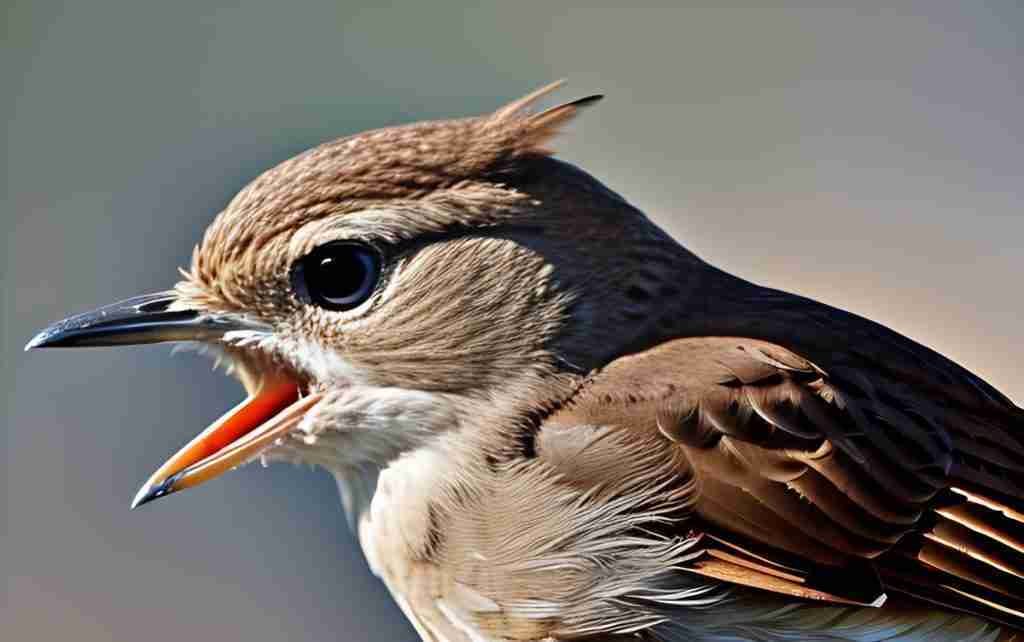Hey fellow bird nerds! 👋 Let’s chat about something buzzing in the birding world: those fancy bird feeders with built-in cameras. You know the ones – promising crystal-clear, close-up shots of every feathered friend (and maybe the occasional cheeky squirrel) that stops by for a snack. Sounds amazing, right? Almost like having a secret window into their tiny, fascinating lives.
But here’s the million-dollar question (or maybe the hundred-dollar question, depending on the model!): Are bird feeders with cameras actually worth the investment? We’ve all been there – you hear a distinctive chirp, dash to the window, and catch only a fleeting glimpse of a colourful wing disappearing into the leaves. Frustrating! Could a camera feeder be the answer to capturing those missed moments and finally identifying that mystery bird?
Here at [Your Brand Name – e.g., Feathered Friends HQ], we’re obsessed with helping you get the most joy out of your birdwatching adventures. So, we decided to take a deep dive into the world of smart bird feeders. We’ll unpack the good, the slightly-less-good, and help you figure out if adding one to your backyard setup is the right move for *you*. Grab a cuppa, settle in, and let’s explore whether this techy gadget is a birding game-changer or just a pricey novelty.
So, What Exactly *Is* a Bird Feeder with a Camera?
Okay, let’s break it down. At its core, a bird feeder with a camera is exactly what it sounds like: a bird feeder (the part that holds the seeds or nectar) combined with a small, usually weather-resistant camera. Think of it as your standard feeder got a techy upgrade!

These gadgets typically include:
- The Feeder Itself: This can vary hugely in design, from hopper styles for seeds to platforms, or even specialized hummingbird feeders. The capacity and type of food it holds are important considerations, just like with any regular feeder.
- The Camera: This is the star of the show! Camera quality ranges widely, offering different resolutions (how clear the picture is), fields of view (how much the camera can “see”), and sometimes night vision (for those nocturnal visitors… or raccoons!).
- Connectivity: Most smart feeders connect to your home Wi-Fi network. This is crucial because it allows the feeder to send images and notifications directly to your smartphone or tablet via a dedicated app.
- Power Source: They need electricity! This usually comes from a rechargeable battery (you’ll need to take it out and charge it periodically) or sometimes a small solar panel that keeps the battery topped up (pretty neat!).
- The App: This is your control center. The app lets you view live footage, browse recorded photos and videos, adjust settings, and often includes fancy features like AI bird identification.
Essentially, it’s designed to automatically capture photos or short video clips whenever a bird (or squirrel, let’s be honest 🐿️) triggers its motion sensor. You get notified on your phone, and voilà! Instant close-up bird action, even if you’re miles away.
The “Heck Yes!” Reasons: Why You Might Absolutely Adore One 😍
Alright, let’s get to the exciting part! Why are people flocking (pun intended!) to buy these things? There are some seriously compelling reasons why a camera feeder could rock your birdwatching world.
Get Jaw-Droppingly Close (Without Scaring Them Off!)
This is the BIG one. Imagine seeing the intricate patterns on a Downy Woodpecker’s feathers, the subtle colour shifts on a House Finch, or the focused intensity in a Chickadee’s eye as it selects the perfect seed. Traditional binoculars are great, but they can only get you so close, and your very presence can sometimes make birds skittish.
With a camera feeder, the lens is *right there*, capturing details you’d likely miss otherwise. Remember that time you *thought* you saw a rare warbler, but it flew off before you could get a good look? A camera feeder might just capture that crucial identifying feature next time. It’s like having front-row seats to the best show in nature, 24/7.
Never Miss a Feathered Visitor (Even When You’re Out!)
Life happens. You can’t always be glued to your window, waiting for bird action. Maybe you’re at work, running errands, or even on vacation. Standard feeders are great, but you only enjoy the birds that visit while you happen to be looking.
Enter the smart feeder! With motion detection and smartphone notifications, it acts as your personal bird paparazzi. Picture this: you’re stuck in a boring meeting, and your phone buzzes. You sneak a peek – it’s a notification from your feeder app showing a stunning Rose-breasted Grosbeak munching away! Suddenly, the meeting isn’t so bad. 😉 These feeders keep a vigilant eye, ensuring you catch glimpses of *all* your visitors, not just the ones that show up during your coffee break.

Become a Bird ID Superhero 🦸♀️🦸♂️
Let’s face it, bird identification can be tricky! Was that a Cooper’s Hawk or a Sharp-shinned Hawk? A Chipping Sparrow or a House Sparrow? Sometimes they move so fast, or the lighting isn’t quite right. Field guides and apps are helpful, but they rely on you accurately remembering what you saw.
A camera feeder provides concrete evidence! Having clear photos or videos makes identification exponentially easier. You can zoom in, compare markings side-by-side with your guide, and take your time. Many feeder apps even come with built-in Artificial Intelligence (AI) that attempts to identify the birds for you. While AI isn’t always perfect (sometimes it hilariously mistakes a leaf for a bird!), it can be a fantastic starting point, especially for beginners. No more ID mysteries – you’ll have the proof right on your phone!
Share the Avian Joy (Instantly!)
Birdwatching is often a personal pleasure, but sometimes you capture a moment so cool, you just *have* to share it! Maybe it’s a baby bird’s first visit, a funny squirrel antic, or a rare migratory species passing through. Trying to describe it just doesn’t do it justice.
With a camera feeder, sharing is a breeze. Most apps let you easily download photos and videos to your phone. You can text that amazing shot of the Indigo Bunting to your birding buddy, post a hilarious clip of a Blue Jay stuffing its beak to social media, or even create a digital album for your family. It’s a fantastic way to connect with fellow enthusiasts and share the wonder of your backyard birds with others who might not get to see them otherwise.
Deter Pesky Squirrels… or at Least Laugh at Them!
Ah, squirrels. The acrobatic, persistent, often frustrating gatecrashers of the bird feeding world. While no feeder is 100% squirrel-proof, some camera feeders incorporate features designed to deter them, like specific perch designs or even mild alerts (though effectiveness varies!).
But even if they can’t always keep squirrels *off* the feeder, they absolutely excel at capturing their hilarious antics! The footage of squirrels attempting elaborate heists, contorting themselves into impossible positions, or getting momentarily flummoxed can be pure comedy gold. So, while it might not solve your squirrel problem entirely, it can certainly provide some entertainment value. 😄
Educational Fun for the Whole Family
Got kids, grandkids, or just curious adults in your life? A camera feeder can be an incredible educational tool. It brings nature right up close in a way that’s engaging and accessible.
Imagine gathering around a tablet to watch the morning’s visitors, identifying different species together, and talking about their behaviours. Why does the cardinal prefer sunflower seeds? How does the nuthatch climb down the tree trunk headfirst? Seeing these things happen live or on video makes learning about local wildlife much more dynamic and memorable than just looking at pictures in a book. It can spark a lifelong interest in nature!
Contribute to Citizen Science (Potentially!)
Some smart feeder platforms are exploring ways to anonymize and aggregate the data collected (like species identified and visit frequency) for scientific research. While this isn’t a primary feature of all feeders, the potential is there.
By simply enjoying your feeder, you might be indirectly contributing valuable data about local bird populations, migration patterns, and feeding habits. It’s a nice feeling to know that your personal birdwatching could be part of a bigger effort to understand and protect the birds we love. Check the specifics of the model you’re interested in if this aspect appeals to you.
Hold Your Horses… Potential Downsides and Things to Consider 🤔
Okay, we’ve painted a pretty rosy picture. But like any gadget, smart bird feeders aren’t perfect. Before you click “Add to Cart,” let’s talk about the potential drawbacks and things you really need to think about.
The Price Tag 💸 Oof!
Let’s not beat around the bush: bird feeders with cameras are significantly more expensive than your average tube or hopper feeder. Prices can range from around $150 to upwards of $300 or even more, depending on the brand, features, and camera quality.
Compare that to a standard, perfectly functional feeder that might cost you $20-$50. You need to ask yourself honestly: is the added value of the camera features worth the extra cost *for you*? If you’re on a tight budget, this might be a major deciding factor.
Tech Hurdles & Wi-Fi Woes 📶
These feeders rely on technology, and technology… well, it can be finicky sometimes. First off, you absolutely need a decent Wi-Fi signal *at the location where you plan to place the feeder*. If your Wi-Fi barely reaches your back patio, the feeder might struggle to connect, leading to frustration, missed recordings, and connection dropouts.
Then there’s the app setup, potential software updates, and occasional troubleshooting. Are you comfortable downloading apps, pairing devices, and maybe fiddling with settings if things go wrong? If you tend to get easily frustrated by tech glitches, this might not be the most relaxing addition to your birding hobby.
Battery Life & Power Management 🔋
Most camera feeders run on rechargeable batteries. This means you’ll need to periodically bring the battery (or sometimes the whole camera unit) inside to charge it via USB. How often depends on how much activity your feeder gets, the camera settings, and the battery capacity, but it could be anywhere from every few days to every few weeks.
Are you prepared for this regular maintenance task? Some models offer solar panel accessories, which can significantly extend battery life or even keep it perpetually charged in sunny locations – but these often cost extra. Consider the effort involved in keeping your feeder powered up.
Camera Quality Varies (Significantly!)
Not all smart feeder cameras are created equal. Cheaper models might have lower resolution, resulting in grainy or pixelated images, especially when zoomed in. The field of view might be narrow, potentially cutting off parts of the bird or missing action happening just outside the frame.
Night vision quality can also differ – some provide clear black-and-white images, while others might be fuzzy or have limited range. It’s crucial to look at sample images or videos from real users (not just the marketing materials!) for the specific model you’re considering. Managing your expectations regarding image quality based on the price point is important.
Subscription Fees? Read the Fine Print! 📜
This is a big one! While the feeder itself has an upfront cost, some brands require an ongoing subscription fee to unlock all the features. This might include cloud storage for saving more than a few days’ worth of videos, advanced AI identification features, or longer recording times.
These fees can add up over time, turning a one-time purchase into a recurring expense. Always, always check the product details and reviews to understand if a subscription is required for the features *you* care about most. Some offer basic functionality for free, which might be enough for you, but be aware of potential hidden costs.</
Feeder Design Limitations
Integrating a camera and electronics often influences the feeder’s design. Some smart feeders might have a smaller seed capacity than traditional large feeders, requiring more frequent refilling. The perch design or feeding ports might not be suitable for all types of birds you hope to attract.
For example, a feeder designed primarily for smaller songbirds might not accommodate larger species like woodpeckers or jays as easily. Consider the types of birds common in your area and whether the smart feeder’s design meets their needs and your desired maintenance level (refilling frequency).
Durability & Weatherproofing Issues
These feeders live outdoors, exposed to sun, rain, wind, snow, and maybe even hail. While most are designed to be weather-resistant, durability can vary. Cheaper plastic models might become brittle in intense sun or crack in freezing temperatures over time.
Look for feeders made from sturdy materials with good seals around the camera and battery compartments. Reading user reviews that mention how the feeder held up over seasons in different climates can be very insightful. You want your investment to last more than just one season!
Making the Call: Is a Smart Bird Feeder Right for *You*?
So, we’ve laid out the good, the bad, and the techy. Now comes the moment of truth: deciding if one of these camera feeders belongs in your backyard. There’s no single right answer – it really depends on your personal priorities, budget, and birdwatching style.
Let’s quickly recap the main tug-of-war:
| Potential Pros 👍 | Potential Cons 👎 |
|---|---|
| Incredible close-up photos/videos | Higher initial cost |
| Capture birds you might otherwise miss | Requires good Wi-Fi at feeder location |
| Aids in bird identification (photos + AI) | Potential tech setup/troubleshooting |
| Easy sharing of cool sightings | Regular battery charging needed (unless solar) |
| Entertaining squirrel/wildlife footage | Camera quality varies by model/price |
| Educational and fun for families | Possible ongoing subscription fees |
| Potential contribution to citizen science | Feeder design/capacity might be limited |
| Get notifications for visitors | Durability/weatherproofing concerns |
To help you decide, ask yourself these questions:
- How important are those super close-up views and photos to me? Is seeing feather detail a top priority, or are you happy observing from a distance?
- Am I generally comfortable with technology? Does setting up apps and occasionally troubleshooting Wi-Fi sound manageable or like a headache?
- What’s my budget? Am I prepared for the higher upfront cost and potentially ongoing subscription fees?
- Do I enjoy sharing photos and videos of my bird sightings? Would having an easy way to capture and share enhance my hobby?
- Where would I place the feeder? Is there a spot with a strong Wi-Fi signal that’s also safe and attractive for birds?
- How much maintenance am I willing to do? Is regular battery charging feasible for me?
Think about it like this: If you’re excitedly nodding along, thinking, “Yes! I desperately want those amazing close-ups, I love sharing bird pics, and I don’t mind figuring out an app!” then a camera feeder could be a fantastic addition to your setup. 🎉
However, if you’re thinking, “Ugh, another gadget to charge? My Wi-Fi is patchy out back, and I’m perfectly happy with my binoculars and field guide,” then maybe sticking with traditional methods is the way to go. And that’s totally okay! The goal is to enjoy the birds, however you choose to do it.
Tips if You Decide to Take the Plunge 🚀
Okay, you’ve weighed the pros and cons, and you’re leaning towards getting a smart bird feeder. Awesome! To help you make a great choice and get the best experience, here are a few tips:
- Do Your Homework: Don’t just buy the first one you see! Read reviews (especially from dedicated birding sites or forums), compare different models, and watch video reviews if you can. Look for feedback on camera quality, app usability, battery life, and durability in real-world conditions.
- Check Camera Specs Carefully: Look beyond just megapixels. Consider the resolution (HD is good, Full HD 1080p or higher is better), the field of view (wider usually means seeing more), and whether it has decent night vision if you’re curious about nocturnal visitors.
- Verify Wi-Fi Requirements: Make sure your home Wi-Fi network (usually 2.4GHz band for better range) reaches the intended feeder location strongly. Use your phone to test the signal strength beforehand.
- Consider the Power Source: Decide if regular battery charging works for you, or if investing in a model with a solar panel option is worth the extra cost for convenience.
- Understand App Features & Costs: Know exactly what the app offers. Is AI identification important? How much video storage is included for free? Are there features locked behind a subscription paywall? Make sure it aligns with your expectations.
- Evaluate Feeder Design & Capacity: Does it hold the type of seed your local birds prefer? Is the capacity large enough, or are you okay with frequent refills? Are the perches suitable for the birds you want to attract?
- Prioritize Placement: Choose a spot with good Wi-Fi, a clear view for the camera (not blocked by leaves), and most importantly, safety for the birds. Keep it a safe distance from windows to prevent collisions and away from areas where predators like cats can easily ambush them.
Community Corner: We Want to Hear From YOU! 🗣️
One of the best things about the birding community is sharing experiences and learning from each other. Here at [Your Brand Name – e.g., Our Birding Hub], we truly believe in the power of shared wisdom – we love hearing from our flock!
So, what’s your take on bird feeders with cameras?
- Do you own one? What do you love (or maybe not love so much) about it?
- Which model do you have, and would you recommend it?
- What’s the coolest bird or funniest moment you’ve captured?
- If you don’t have one, what are your biggest questions or hesitations?
Jump into the comments below and share your thoughts, tips, or funny stories! Your experience could be incredibly helpful to someone else trying to make this decision. And if you have amazing photos from your camera feeder, we’d love to see them (if you can share links or descriptions!). Let’s build our collective birding knowledge together!
The Final Chirp: Worth It or Not?
So, back to our big question: Are bird feeders with cameras worth it? The answer, as you’ve probably gathered, is a resounding… it depends!
They offer an undeniably magical way to get incredibly close to birds, capture moments you’d otherwise miss, simplify identification, and easily share your passion. For tech-savvy birders who crave those intimate views and enjoy sharing their sightings, the investment can absolutely be worth it, bringing a whole new dimension to backyard birdwatching.
However, they come with a higher price tag, require technological setup and maintenance (Wi-Fi, charging), and might involve ongoing costs. If you prefer a simpler, tech-free approach, have budget constraints, or live where Wi-Fi is tricky, a traditional feeder and a good pair of binoculars might remain your best companions.
Ultimately, there’s no wrong way to enjoy birds. Whether you’re embracing the latest tech or sticking to the classics, the most important thing is the connection you feel with the natural world fluttering just outside your window. Camera or no camera, the simple act of providing food and watching your feathered visitors is a reward in itself.
What path will you choose for your backyard birding haven? Whatever you decide, we hope this guide helped clarify the picture!
Ready to explore more ways to attract beautiful birds or discover other birding gear reviews? Browse our other articles, sign up for our newsletter for exclusive tips, or join our friendly community on social media! We’re always here to help you make your birdwatching journey even more rewarding.
Happy Birding! 🐦



